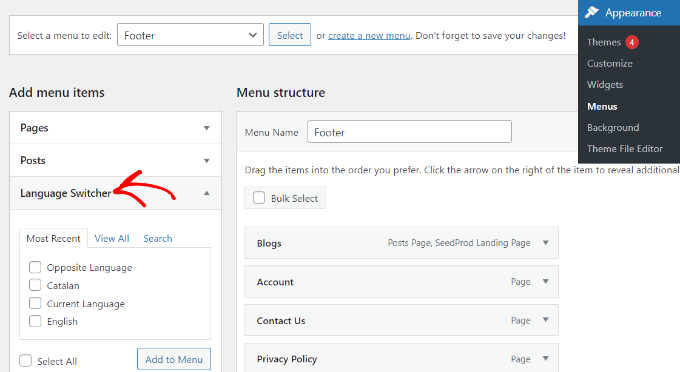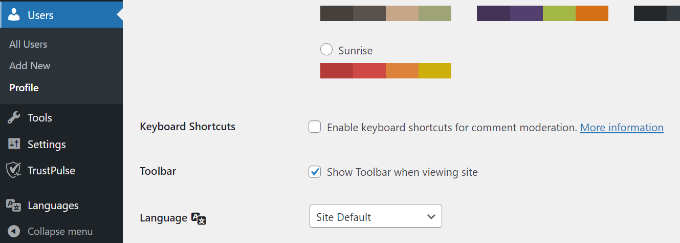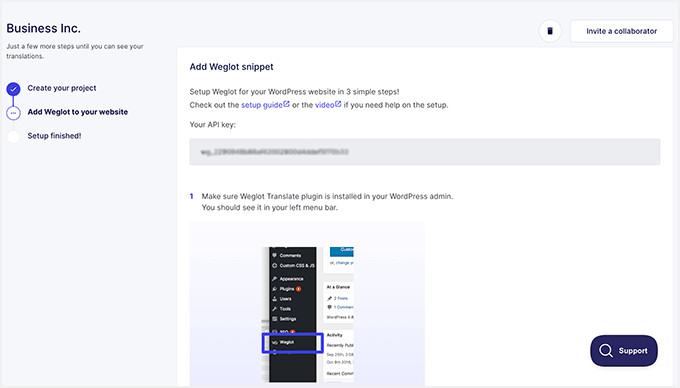Have you ever wondered how to create a multi-language website in WordPress and reach visitors from every corner of the globe? Whether you’re building a blog, e-commerce site, or company hub, making your WordPress website multilingual can unlock exponential growth and boost accessibility. In this comprehensive guide, you’ll discover why multi-language matters, how WordPress helps you succeed, the best plugins and manual methods, and step-by-step strategies that empower you—whether you’re a beginner or seasoned developer—to create your multi-language vision.
We’ll cover proven approaches based on leading industry guides, show you powerful real-world examples, and answer the top 10 questions everyone has about multilingual WordPress sites. By the end, you’ll know how to add languages, handle SEO, boost engagement, and offer a seamless user experience for all.
What is a Multi-Language Website in WordPress?
A multi-language website in WordPress is a site that presents content in more than one language. Instead of serving only a default language (like English), the same website provides users access to translations of posts, pages, and even navigation menus. This creates a more inclusive and accessible online experience, maximizing your reach to international readers, customers, and stakeholders.

Technically, a multi-language WordPress site is one where you can easily switch the site’s language (often via a dropdown or language switcher in the menu) and find not just automatic but often human-edited translations of every important element—from articles to product descriptions.
Why Create a Multi-Language Website in WordPress?
If your audience isn’t limited to a single country or language, having a multi-language website in WordPress matters more than ever. Here are compelling benefits to consider:
- Reach a global audience: Multilingual websites let you tap into untapped international markets, gaining new visitors, leads, and customers.
- Boost SEO and Rankings: Multi-language content improves visibility on search engines like Google by showing up for local language search queries.
- Enhance User Experience: Offering content in users’ preferred language reduces bounce rates and increases engagement.
- Increase Trust and Credibility: Speaking your customer’s language builds trust and shows cultural sensitivity.
- Drive Conversions and Sales: Multilingual e-commerce sites typically see higher conversion rates from international buyers.
- Stay Competitive: As more websites become multilingual, standing out in your niche requires meeting diverse audience needs.
- Comply with Regulations: In some regions, like the EU, offering content in official languages may be a legal requirement.

Powerful Use Cases of Multi-Language WordPress Websites
Wondering where multi-language WordPress shines? Here are real-world examples and use cases:
- Global Blogs and News Portals: Bloggers wanting to reach readers in Europe, Asia, the Americas, or Africa.
- E-Commerce Stores: Online shops targeting buyers in multiple countries, requiring translated product pages, descriptions, and checkout flows.
- Educational Platforms: Schools or universities offering courses to international students.
- SaaS & Technology Sites: Software providers capturing global markets and supporting diverse documentation needs.
- Tourism & Travel Agencies: Attracting visitors from other countries with information in their native language.
- Government & NGO Sites: Government portals or nonprofits mandated to serve citizens in several languages.

How to Create a Multi-Language Website in WordPress (Step-by-Step Process)
Now let’s get practical! How do you create a multi-language website in WordPress? There are two proven approaches:
- Manual (no plugin): You create separate posts/pages for each language.
- Using Plugins: Install a multilingual WordPress plugin to automate translation and manage language versions.
We’ll focus on the plugin method, as it balances ease, scale, and SEO-friendliness.
Step 1: Choose the Best Multi-Language Plugin
The top three plugins used by millions for creating a multi-language WordPress site are:
- Polylang
- TranslatePress
- WPML (WordPress Multilingual Plugin)
Others (like Weglot) are also popular, but these three offer broad flexibility and are beginner-friendly.

Step 2: Install and Activate Your Chosen Plugin
From your WordPress dashboard:
- Go to Plugins → Add New
- Search for your chosen multilingual plugin (e.g., Polylang, TranslatePress, WPML)
- Click Install, then Activate

Step 3: Add Your Website’s Languages
Each plugin has an easy interface for adding languages. For example: with Polylang or WPML, you’ll select your default language, then add any additional languages from a dropdown list.
- Example: English (default), Spanish, French, German.

Step 4: Translate Your Content
This is the core step. You can choose:
- Manual translation: Write each post/page individually in each language.
- Automatic translation: Let the plugin use automatic tools (like Google Translate), then edit as needed for accuracy.
TranslatePress and WPML even let you invite team members or translators to collaborate on high-quality translations.

Step 5: Add a Language Switcher
After translating, you’ll need to help users switch between versions.
- Add a language switcher (dropdown, flags, or menu links) to your website header, footer, or sidebar. This is typically set up in your plugin’s settings.

Step 6: Manage SEO for Multilingual WordPress Sites
SEO is critical! Good plugins create separate URLs (e.g., example.com/en/ and example.com/fr/)—or subdomains—for each language. Some also add hreflang tags so Google knows which version to show users in different regions.
- Ensure translated content is high quality, not solely machine-generated.
- Translate meta titles, descriptions, and slugs for website visibility.

Step 7: Test, Optimize, and Launch
Preview your site in each language. Test menu navigation, page content, forms, and the language switcher. Read more on WordPress.com’s multilingual setup guide for QA tips.
When all looks good, launch—and monitor your traffic from new regions!
Common Challenges, Myths, and Solutions
- Myth: “Automatic translation is enough.”
Reality: Only human-reviewed translations can truly capture context, tone, branding, and technical accuracy. - Challenge: Managing SEO across languages.
- Solution: Use plugins that add hreflang tags and allow you to edit SEO elements for each language. Pair with Yoast SEO.
- Myth: “You must hire expensive developers.”
Reality: Anyone comfortable with WordPress can use leading plugins and guides to build a polished multilingual site. - Challenge: Keeping translations up-to-date.
- Solution: Set reminders and build translation workflows for new content. Some plugins offer automated change detection.
- Myth: “Multi-language websites slow down WordPress.”
Reality: The effect is minimal if you optimize images, cache pages, and only run the languages you need.
Frequently Asked Questions (FAQs)
1. How do I create a multi-language website in WordPress for free?
You can use free plugins like Polylang or TranslatePress’s base version. They offer essential features to add multiple languages, manual translation, and basic language switching without coding.
2. Which is the best plugin to create a multi-language site in WordPress?
Polylang, TranslatePress, and WPML are the top three. Each offers strong translation management, SEO features, and integration with major themes and page builders.
3. Will my site’s SEO be affected if I add more languages?
If done properly, multi-language sites boost SEO by expanding your search reach. Use plugins that provide hreflang tags and let you translate meta titles, descriptions, and slugs.
4. Can I create a multi-language website without plugins?
Yes. You can manually duplicate each page or post for every language and build custom menus for switching, but this gets tedious and is harder to scale.
5. Are machine translations enough?
Automatic translation is a good start for speed, but always review translations or use human professionals for accuracy, brand voice, and context.
6. How do I add a language switcher to my WordPress website?
Most plugins provide widgets or shortcodes for adding a language switcher in your menu, sidebar, header, or footer. Enable and place the switcher where your visitors can easily find it.
7. Do themes and page builders like Elementor work with multi-language plugins?
Yes, major plugins support popular themes and page builders. Always check compatibility before starting the translation process.
8. Can I show different images or content in each language?
Absolutely. Multilingual plugins let you customize not just text but also images, links, and even downloadable files per language.
9. Is it difficult to maintain content updates across all languages?
It requires organization. Some plugins notify you when an original page is updated so you can refresh translations. Build a workflow or involve a translation team.
10. Does a multi-language website slow down WordPress?
A well-set-up multi-language site is only slightly slower, but WordPress caching, fast hosting, and only including needed languages minimize performance impacts.
Conclusion: Expand Your Reach With a Multi-Language Website in WordPress
Now you know how to create a multi-language website in WordPress. Breaking the language barrier is easier than ever—whether you use Polylang, TranslatePress, or WPML, you can scale your brand worldwide, drive engagement, and boost your site’s SEO.
Remember: Focus on quality translations, helpful navigation via a language switcher, and SEO-optimized structure for every language version. With a little setup and strategic planning, your WordPress site can become a truly global platform.
Ready to take your website from local to global? Start your multilingual journey today and open your content to the world!
For more tips on mastering WordPress, check out our favorite beginner multilingual guide and detailed documentation from WordPress.com.
